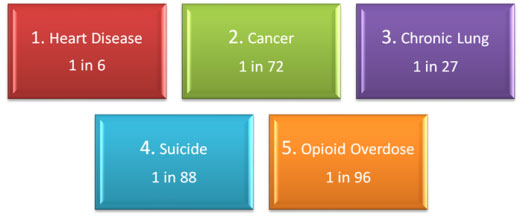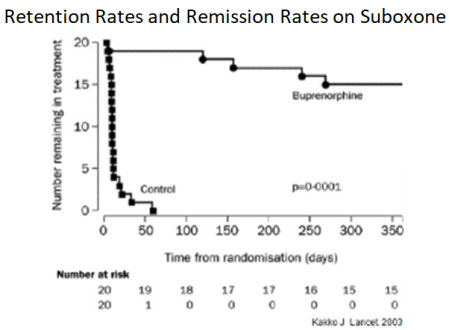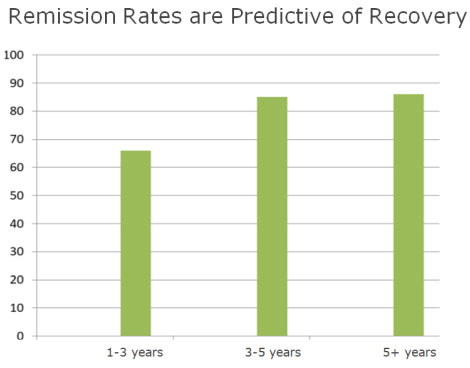The Facts
Fact:

If you were born in 2017, the odds are 1 in 96 that you will die of an Opioid Overdose. Overdose is ranked 5th as a Cause of Death.
Opioid Drug Overdose is the leading Cause of Death of Americans Under the age of 50
If you are lucky, opioids won’t kill you. If not you will be a casualty of the opioid epidemic.
- Opioid addiction is now considered a chronic illness like diabetes or hypertension;
- Experts recognize that opioid addiction is a major killer just like cancer or heart disease;
- Drug overdose is now the number 1 cause of death of Americans under the age of 50;
- If you were born in 2017, you have a 1 in 96 lifetime chance of dying from an opioid overdose.
Suboxone Medication Assisted Treatment Saves lives and Prevents Overdose Deaths from Opioid Prescription Pill, Heroin and Fentanyl
Overdose Deaths within 4 Months after “Graduating” from 28 Day Abstinence-Based Rehab Programs is Dangerously High
This graph shows that dependent heroin users completing 28 day abstinence- based treatment are 32 times more likely to die of overdose within the first 4 months after ”graduating” then are dependent heroin users who receive no treatment at all. Risk of overdose death is at its highest following discharge from these programs. Rapid detox is also a significant risk factor for overdose deaths after treatment.

Overdose Deaths within 1 Year after “Graduating” from a 28 Day Abstinence-Based Rehab Programs is Dangerously High
This graph shows that dependent heroin users completing 28 day abstinence- based treatment are 8 times more likely to die of overdose within the first year after ”graduating” then are dependent heroin users who receive no treatment at all.

Relapse Rates are Over 90% after “Graduating” from 28 Day Abstinence-Based Opioid Rehab Programs
This is Unacceptable! It’s time for everyone admits that abstinence-based treatment only is ineffective. More than 90 percent of opioid addicts in abstinence-based treatment return to opioid abuse within one year. It is time to concede that abstinence-only treatment is powerless to deal with the opioid epidemic.
Despite its Failure, 90 Percent of Opioid Addiction Treatment Is Abstinence Based
Ninety percent of all opioid treatment is based on abstinence. This failed approach systematically denies access to Suboxone despite the fact that abstinence-only inpatient or outpatient opioid addiction treatment is not effective.
Even After Near Fatal Opioid Overdose, Less than 30 Percent are Prescribed Suboxone
Even after near fatal opioid overdose, only 30% of the survivors get life-saving medicine, like Suboxone, to prevent another life threatening event. Those who don’t often go on to die from a second overdose.
Annual of Internal Medicine August 7, 2018 Medication for Opioid Use Disorder After Nonfatal Opioid Overdose and Association With Mortality: A Cohort Study
Suboxone: High Grades in Remission and Recovery
Suboxone’s Report Card: Straight A’s

In this study, 75 percent of patients on Suboxone Remained in Treatment at the end of 1 year, and this approximated the rate of Sustained Recovery.
- High Recovery Rates
- Sustained Remission Rate
- Low Relapse Rates;
- High Retention Rates ( staying in treatment);
- High Negative Drug Screens- no use of illicit opioids and no stimulants, cannabinoids, or benzodiazepines use;
- Low Mortality Rate from overdose and associated causes;
- Improved Quality of Life and General Health;
- Safe, Well Tolerated with Few Side Effects;
- Outpatient Office Based Addiction Treatment.
The Language of Recovery, Getting it Right
To understand Suboxone’s high Remission and Recovery Rates you need to learn the Language of Recovery:
- Abstinence, often used interchangeably with sobriety, clean or clean time would appear to have clear meanings in the addiction recovery community. In reality their use of these terms are vague and confusing and often at odds with medical definitions. The most precise and useful meaning of abstinence used in addiction medicine literature always relates to the primary abused substance. Medically, complete abstinence is defined as continuous abstinence (non-use) of a primary drug, with no use or asymptomatic use of other drugs during a specified time period.
- Sustained Remission, defined as one year of complete abstinence is the best way to evaluate the effectiveness of an addiction treatment. Relapse rate, Retention Rates (staying in treatment) and Negative Drug Screens are 3 benchmarks used to determine the Sustained Remission Rate. One year of Sustained Recovery is associated with at least a 60 percent chance of Recovery.
- Recovery, the holy grail of addiction treatment, is defined as 5 years of sustained remission (complete abstinence). This 5 year benchmark was chosen because the risk of a person using a drug after 5 years falls to 15 percent, the risk of addiction in the non-addicted general population.
Suboxone: Proven Effective Opioid Addiction Treatment in the Privacy and Security of your Doctor’s office, at home in your community, in your Comfort Zone where you continue to work, and care for your children.
A Swedish study compared patients maintained on 16 mg of Suboxone daily to a control group that only received Suboxone for detoxification (6 days). All patients received psychosocial supports.

This graph shows the percent of people who will be in Recovery based on the length of time they are abstinent as defined above. It takes a year of abstinence before the risk of relapse is less than 1/2. If you are abstinent for 5 or more years, you probably will stay so.
- In this one year study patients treated with Suboxone had a Sustained Remission Rate (abstinence for 1 year) about 70 percent, that is 7 times the national rate of 10 percent for traditional 30 and most 60 day abstinence-based 12 step opioid addiction treatment programs.
- This meant that the Suboxone treated group had a significantly better chance of reaching Recovery (Sustained Remission for 5 or more years).
- Suboxone treated patients outperformed in all benchmark measures including relapse rate, retention rate and percent negative urines.
- Suboxone was found to be “very effective and safe”.
Warning: Of patients not retained in treatment, there was an astounding 20 percent mortality rate. Opioid related deaths are due to overdose, but also HIV, Hepatitis C infections and other diseases associated with opioid addiction. Based on studies like this one, the FDA recognized that opioid addiction may require years or in some cases lifelong treatment with Suboxone.
Suboxone: High Grades in Reducing Opioid Addiction Deaths
- Opioid addiction is associated with a 10 time increase in overall mortality in the general population.
- Suboxone significantly improved survival rates, decreasing overall mortality by at least 50%.
- The number of opioid overdose deaths for 2018 is projected to be 50,117. Suboxone could save approximately 25,000 lives.
It is predicted that while the number of Americans who died from drug overdoses finally fell in 2018 by approximately 5%, opioids were still the drugs most likely to be involved in fatal overdoses.
About 32,000 of the 2018 deaths involved potent synthetic opioids such as fentanyl, which in recent years has become an increasingly common cause of drug deaths. In fact deaths for the year 2017-2918, from fentanyl increased about 20 percent while deaths from opioid pain pills and heroin decreased.
Sadly, many clinicians licensed to prescribe Suboxone prescribe are not doing so. A recent survey found that in 2017 of the clinicians newly licensed or increasing their patient limit, only 75% had prescribed Suboxone and the number of patients treated was very low .
Barriers to prescribing Suboxone included lack of patient demand due to misinformation about it or lack of awareness of its availability in the community, problems associated with treating addiction in general medical practices because of the extra work involved and insurance related issues such as coverage of the medication. A government initiative is aimed at educating the public about the effectiveness and safety of Suboxone and overcoming barriers to its use.
